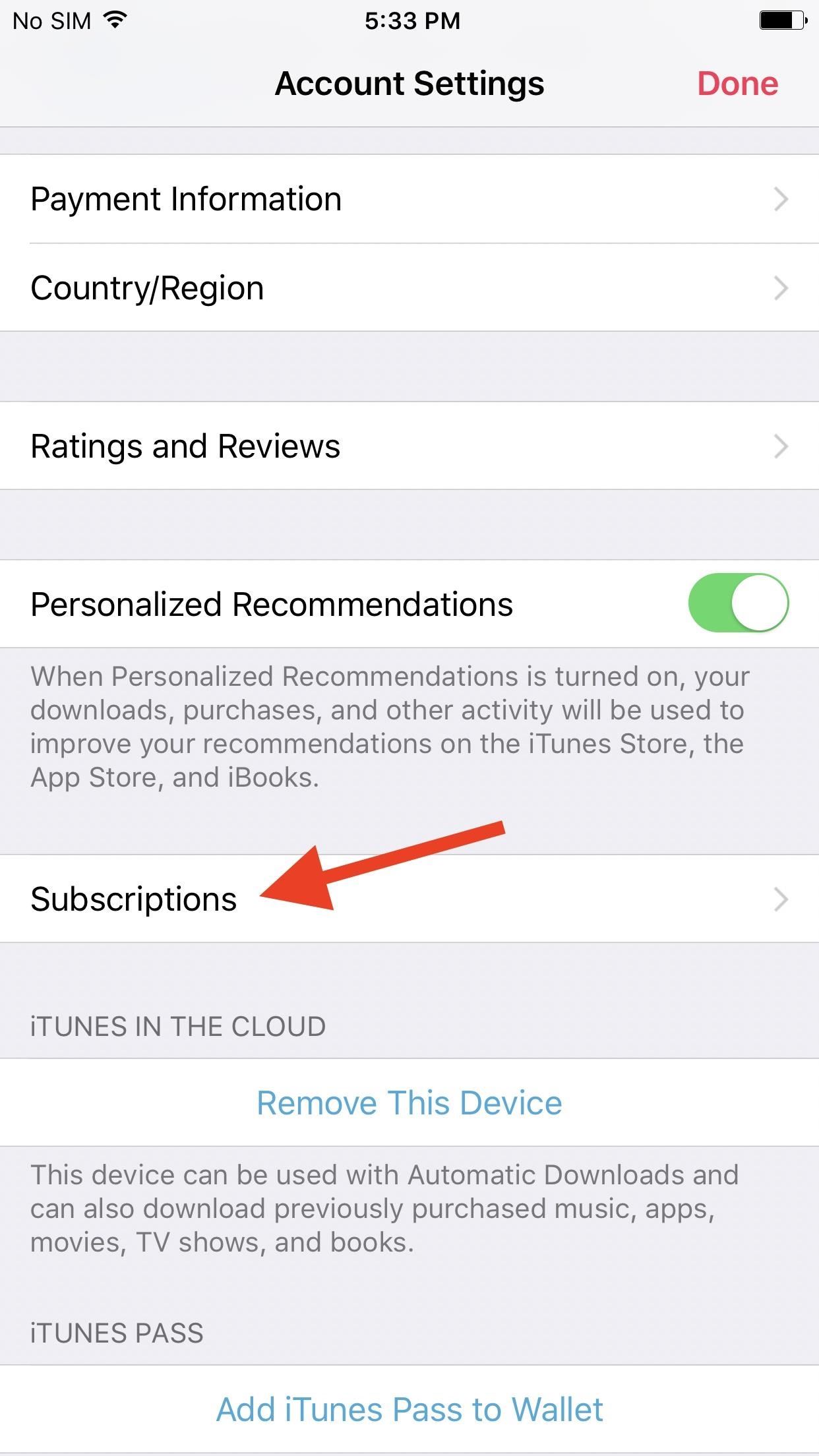
Subscriptions in ios
Автор: Betsy Graham 20.12.2018Getting Started with Auto-renewable Subscriptions in iOS

❤️ : Subscriptions in ios
Actual implementation of the purchasing of an auto-renewable subscription is similar to the same process for other In-App Purchase types. Check Subscription Expiration Date to determine the next renewal date and time. The iTunes and iOS App Store ecosystems offer a virtually unlimited number of subscription-based services and applications.

Cancel app subscriptions On your iPhone, iPad, or iPod touch Follow these steps to cancel app subscriptions with your Apple ID 1. If you're still having issues with subscriptions that don't don't show up on your Apple ID list, you might be getting charges from someone other than Apple.

Getting Started with Auto-renewable Subscriptions in iOS - Crossgrades Within a Service Level Things start to get more complicated when a user moves within the same service level, a. The App Store is able to successfully renew the subscription.

A choose your own adventure! Building an audience of paying subscribers not only generates more revenue, but it offers better customer-developer alignment and leads to better apps. It is up to the developer to fill this gap. Apple bolted on Subscriptions to the existing in-app purchase infrastructure that introduced almost ten years ago. Doing this was not a. StoreKit assumes a transactional, user-driven purchasing experience. For subscriptions, purchases are only transactional initially. Beyond the first transaction, they occur automatically, recurring without user input. At some point, before a subscription renews, an SKPaymentTransaction will appear on the StoreKit queue, unprompted by any user action. This unprompted appearance makes handling the queue much more complicated. Users can switch devices, receipts can be stale, and transactions can go unhandled. Unexpected transactions create an unmanageable number of cases that you need to consider to provide a user with their paid content. Purchasing using normal IAP flow Besides different user interface copy, purchasing a subscription product is identical to purchasing a non-subscription in-app product. The difference is that subscription products will renew, generating unsolicited transactions on the StoreKit queue at a later date. You will use this field to determine what products or services to which a user is entitled. Without a server, you do this on the device. They argue that those built-in methods would just become the target of IAP crackers. However, the code for verifying a receipt file on the device. Handling renewal transactions Handling renewals is a common area for mistakes. In a standard IAP flow, you only need to worry about the status of the StoreKit payment queue while a user is completing a purchase. With subscriptions, your app needs to be prepared to handle these transactions at any time. However, this can be difficult. For example, if your application has an account system, how do you handle a transaction that occurs while there is no user logged in? You have to plan for all of these possibilities when designing your app. The gaps in device-side subscriptions Device-side receipt handling makes a few important things difficult or impossible. Firstly, your subscription status is trapped on the device. If you ever want to expand your service beyond your current app, you will need to design some elaborate escape plan for the current subscription status of your users. Limiting subscription handling to the device also makes it difficult to understand the performance of your business. I think the biggest reason to avoid a device only subscription implementation is just being at the mercy of the StoreKit queue. If for some reason there is a hiccup either in your code or in StoreKit, you could miss a transaction. This would potentially deprive a paying customer or their service. If you are using only device side subscriptions, you may have a hard time debugging or remediating the situation. It really makes sense to use a server. The righteous path Subscriptions with a Server Using a server means: rather than parsing a receipt on the device, you send that receipt to a server for validation and parsing. Sending the receipt to a server Step 2 represents the most radical difference from device-side subscriptions. Rather than implementing receipt parsing and validation in the app, you send the receipt over HTTP to your server. Being able to use to validate a receipt will save you a lot of time. It also provides something that device-side receipt validation cannot: a list of the most recent transactions. When you parse a receipt device side, whatever transactions are in the file are what you get. The receipt file acts as a fetch token to poll data from Apple. This polling is essential for building a complete subscription server. Setting this up can add significant complexity to your backend. You now need a job to check receipts periodically and to be able to handle POSTs from Apple. Also, how often do you poll? When a user has an active subscription, the answer is relatively simple. You can start checking when they are close to renewing, but you will miss out on returns. The complexity comes once a customer cancels a subscription. There is a possibility that, at any time in the future, they resubscribe. If they do this in your app, you will be able to send a new receipt and tell your backend to update their status. However, a user can also resubscribe from the App Store settings page. The more you can save the better, but it depends on your needs. However, only storing the latest expiration cuts you off from a lot of the interesting information a receipt provides. A better implementation would be storing the complete transaction history of a user. Storing the complete history gives you the ability to understand more complex subscriber behaviors like average subscriber lifetimes, cancellations, and the evolution of your paying subscriber base day-by-day. Metrics Without a server holding your receipts, getting good metrics is very difficult. If you plan on understanding your LTV and perhaps making some decisions about user acquisition spending you need to know the dollar amount that each user is spending. You can try to do this on top of existing analytics infrastructure. When you are trying to determine if you are breaking even on ad spend, you want to eliminate as much systematic error as possible and event-based trackers are full of it. Customer service The last big advantage that server-based subscription tracking provides is related to customer support. Supporting Apple subscriptions customers can be painful. Often our best course of action is to tell the user how to contact Apple, or send them instructions for managing their subscription via App Store settings. With a server, we can do better. This requires some work on the back end but can really pay off in avoided 1-star reviews. Use a server If there is a possibility that the app becomes a serious money-making endeavor, having a server tracking your subscriptions from day one will make your life easier. The server features described above represent a substantial amount of work. If you only have time to do one thing, I suggest using a server for receipt validation and storing the receipt file. Having the receipt file will enable you to build everything else mentioned at a later date. If your receipts are trapped on the device, your options are limited. If you want to get up and running with subscriptions faster and have access to all the features mentioned above, you might try. Our mission is to fill the gap left by Apple and other platforms and provide a service for developers to get off the ground quickly with a great subscriptions implementation.
How to Stop Junk Mail Subscriptions in iOS 10
When app subscriptions duration ends, auto-renewable subscriptions will automatically renew until a user cancel the subscriptions. Instead, developers have to rely on parsing a JSON response to find the relevant information and hope the structure of the JSON doesn't change in the future. If you cancel, your subscription will stop at subscriptions in ios end of the current billing cycle. Can it be done on an iOS device. The iTunes Method The easiest method is on your Mac, PC, or laptop. Piece single item purchases such as for game currency like gems and coinssubscriptions will automatically renew until you choose to end them.

